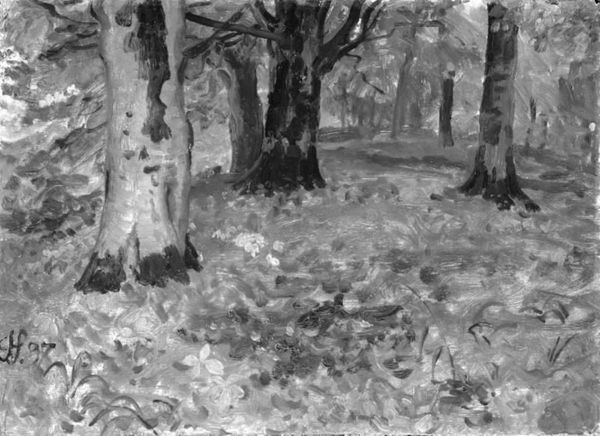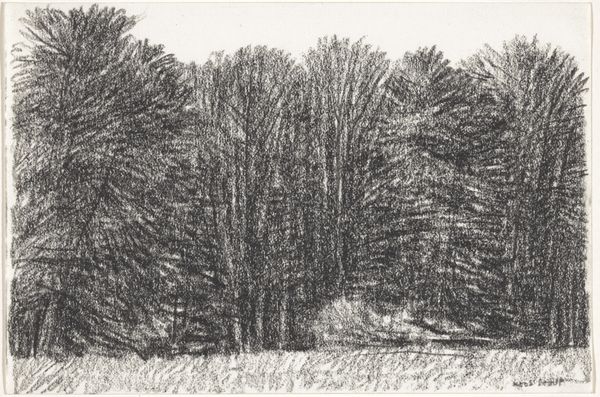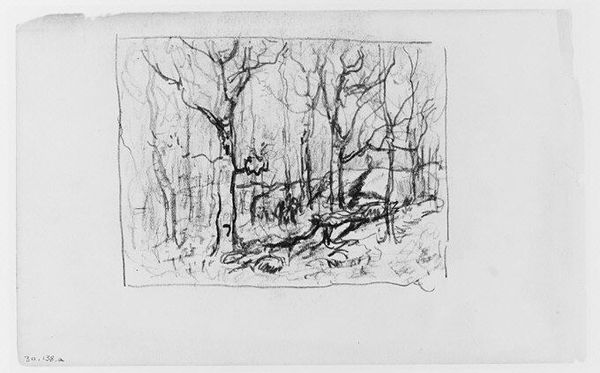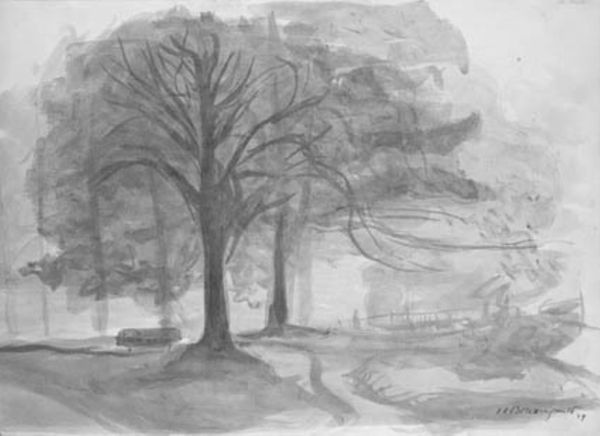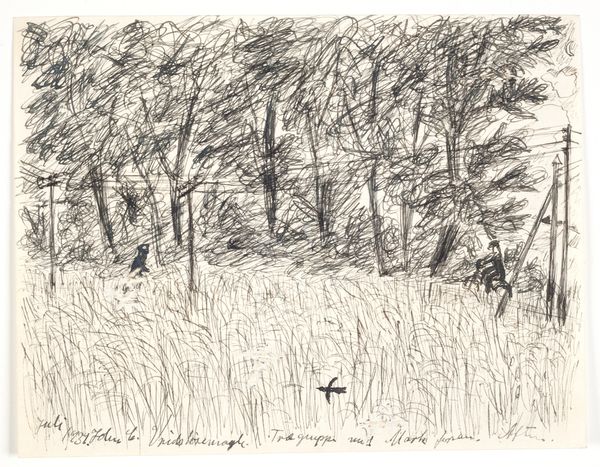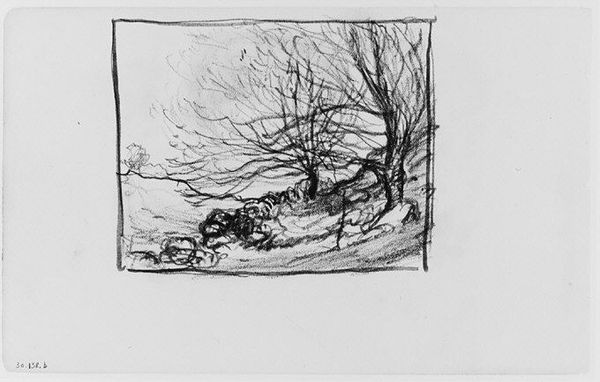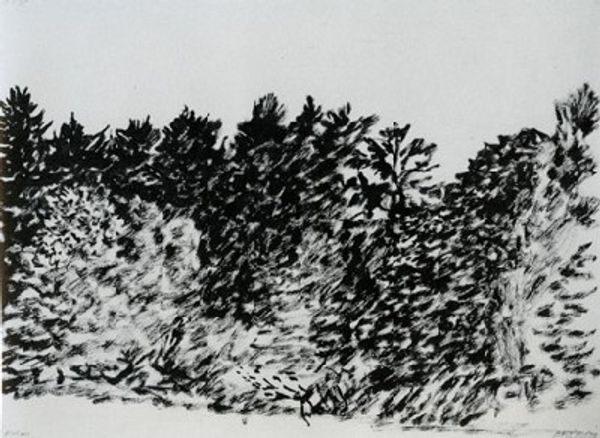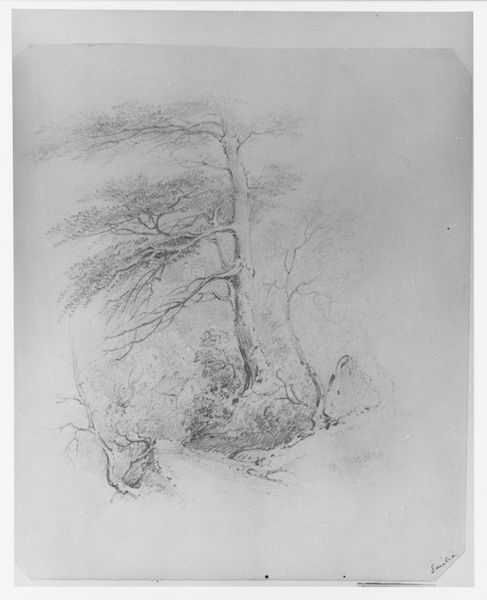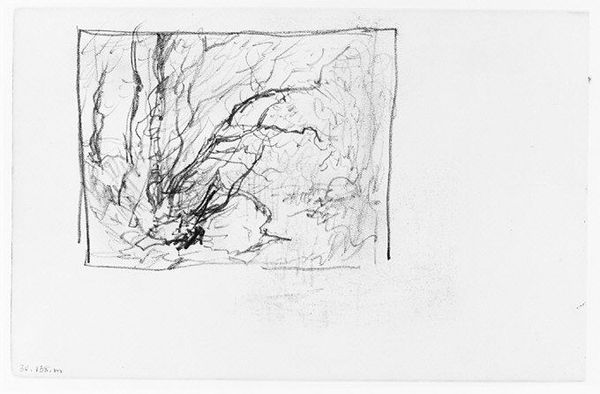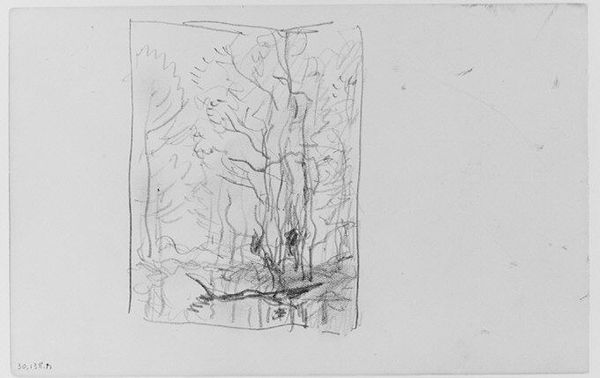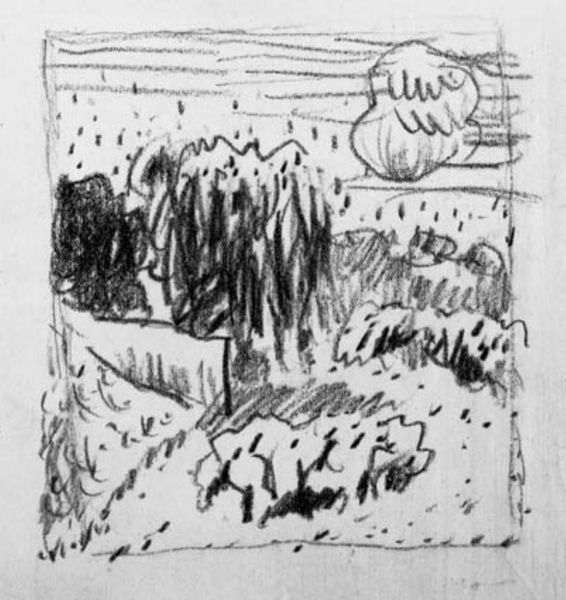
drawing, pencil
#
drawing
#
landscape
#
etching
#
pencil
#
realism
Dimensions: Sheet: 4 7/8 x 7 7/8 in. (12.4 x 20 cm)
Copyright: Public Domain
Curator: Let’s discuss this subtle drawing by Henry Ward Ranger, "Trees (from Sketchbook)", likely created sometime between 1858 and 1916. It is currently held in the collection of the Metropolitan Museum of Art. Editor: Initially, what strikes me is the raw, almost ghostly quality. The delicate lines, the restricted value range—it projects a distinct mood of winter stillness, a stark beauty rendered through simplified form. Curator: It's interesting that you hone in on the aesthetic. To me, this drawing speaks volumes about the role of art production at the turn of the century. Here, Ranger’s utilization of accessible materials—pencil and paper—opens up a discourse about the democratization of art-making and challenges the art establishment's dependence on costly tools or highly refined media. Editor: Granted. And yet, look at how the composition draws the eye. The skeletal branches reach upward, dividing space in a very specific way. There’s a formal language at play that belies the casual nature of a ‘sketchbook’ piece. What is he trying to reveal about the structural nature of the trees, their reaching limbs? Curator: Think also about Ranger's choice of subject. Landscapes became a popular form of artistic labor tied to emerging conservation movements and a wider interest in the scientific exploration of the natural world, as landscapes that had previously been wild become increasingly touched by development, industry, and cultivation. The context adds resonance to the piece beyond simply the visual experience. Editor: True, this period shows us many rapid developments in agriculture, manufacture, and technology. Yet focusing just on material conditions or cultural shifts overlooks something crucial. Take notice of how Ranger creates depth with so few marks, and the attention to tonal shifts within a small scale. The way he describes branches overlapping is, itself, quite striking. Curator: I'd add that these stylistic choices weren't merely aesthetic; the accessibility and perceived immediacy of sketches allowed artists to circulate their ideas more broadly, outside formal exhibition spaces, which had an important role to play for less mainstream artwork. Editor: Perhaps we can both agree that the drawing is greater than the sum of its lines—inviting us into a reflective contemplation of art-making itself. Curator: Precisely. I think Ranger's humble rendering offers rich perspectives on art's relationship to culture, economy, and place.
Comments
No comments
Be the first to comment and join the conversation on the ultimate creative platform.
